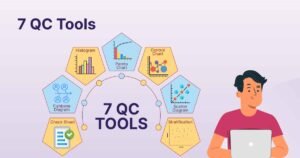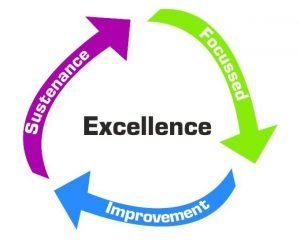Quality doesn’t happen by chance — it’s achieved through data, analysis, and continuous improvement.
The 7 QC (Quality Control) Tools are the fundamental techniques used in Lean and Six Sigma to identify, analyze, and solve quality problems in any process.

⚙️ What are the 7 QC Tools?
These tools were first popularized by Kaoru Ishikawa, one of Japan’s quality pioneers.
They help teams make decisions based on facts, not assumptions — ensuring consistent product and process quality.
🧩 The 7 QC Tools
-
Check Sheet
A simple data collection form used to record how often problems occur.
Example: Tracking daily defects or delays. -
Pareto Chart
A bar graph showing which issues are most frequent or impactful — based on the 80/20 rule (80% of problems come from 20% of causes). -
Cause and Effect Diagram (Ishikawa/Fishbone Diagram)
Helps identify root causes of problems by categorizing them into Man, Machine, Material, Method, Measurement, and Environment. -
Histogram
A graphical display showing how data is distributed — useful for detecting variations or trends. -
Control Chart
Monitors process performance over time to distinguish normal variation from special causes. -
Scatter Diagram
Shows the relationship between two variables — helping identify potential cause-and-effect links. -
Flow Chart
A step-by-step visual representation of a process that helps identify bottlenecks, redundancies, or waste.
🚀 Benefits of Using QC Tools
- Promotes data-driven problem solving
- Helps identify root causes instead of symptoms
- Improves process stability and quality
- Builds a culture of continuous improvement
- Enhances communication and teamwork across departments
🧭 Conclusion
The 7 QC Tools may be simple, but they’re incredibly powerful.
When used consistently, they empower teams to understand their processes, make better decisions, and drive lasting improvements in quality and performance.
“Quality improvement begins with understanding — and the 7 QC Tools help you see what really matters.”






